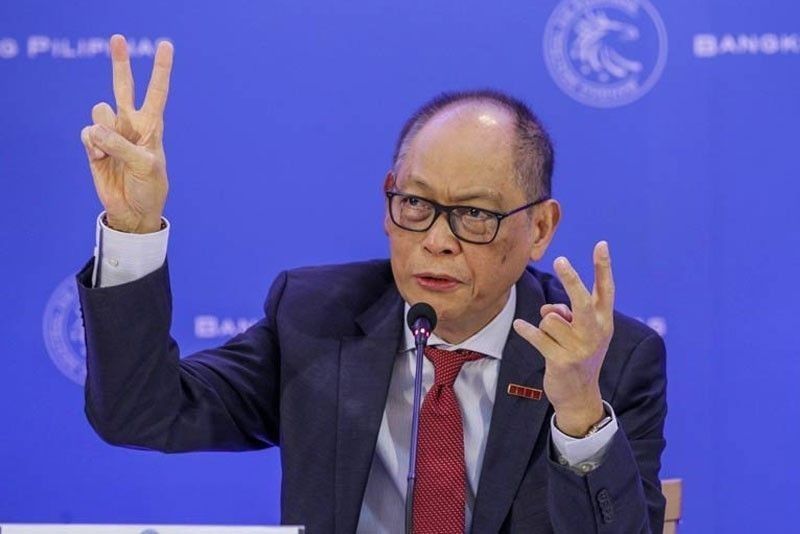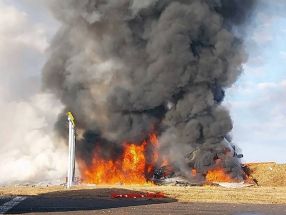BSP keeps rates unchanged but pressure to hike mounts

MANILA, Philippines — The Bangko Sentral ng Pilipinas kept its ultra-loose monetary policy unchanged on Thursday, but the pressure to begin tightening is building up as high oil prices fan inflation while central banks in developed economies started their liftoff.
At their meeting, the seven-member Monetary Board decided to leave the rate on overnight reverse repurchase facility untouched at a historic low of 2% while the rates on the overnight deposit and lending facilities have been maintained at 1.5% and 2.5%, respectively.
Banks typically use the BSP’s policy rate as basis when charging interest on loans. The key rate has been unchanged since November 2020, when the central bank ended an aggressive easing episode meant to stimulate credit growth and consumption in the pandemic-battered economy.
In deciding to hold, BSP Governor Benjamin Diokno stressed the need to nurture the economy’s nascent recovery which, he said, “has gained stronger traction with the easing of remaining mobility restrictions.”
But the BSP chief acknowledged that the central bank’s space to sustain its easy money policy is getting narrower by the day, no thanks to rallying oil prices triggered by the Russia-Ukraine war which could set off an increase in prices of key consumer items. The BSP factored this in their decision by upping their baseline inflation forecast for this year to 4.3% from 3.7% previously. If realized, the BSP will fail to hit its 2-4% annual target again.
The US Federal Reserve also hiked rates this month for the first time since 2018 to cool inflation stateside, adding pressure to emerging economy central banks to follow suit to stem capital flight.
In a Bloomberg interview last week, Diokno said the central bank still plans to start its rate hike cycle in the second half. But for now, the BSP believes supporting economic recovery should take precedence over combatting inflation.
“On balance, the Monetary Board sees scope to maintain the BSP’s policy settings in order to safeguard the momentum of economic recovery amid increased uncertainty, even as it continues to develop its plans for the gradual normalization of its extraordinary liquidity measures,” Diokno said in a press conference.
Indeed, Miguel Chanco, chief Emerging Asia economist at Pantheon Macroeconomics, said the BSP will likely keep its accommodative monetary policy stance unchanged this year despite the threat of inflation.
"We highly doubt that an average inflation forecast above the 4% upper-bound of the BSP’s target range is a signal that the Board is itching to raise rates. Remember that the headline rate spent almost all of last year above 4% and members barely budged," Chanco wrote in an e-mailed commentary.
"Overall, we maintain that the BSP will be one of the few central banks in the region that is unlikely to start normalizing monetary policy this year. Governor Diokno was fairly explicit during the Q&A that he would prefer if the government took ‘non-monetary interventions’ to tackle the current inflationary pressures. Moreover, the size of the Philippines’ economy remains below the pre-pandemic picture, let alone the pre-Covid trend," he added.
Rate hike-RRR cut tandem?
In the same press conference, Diokno said the BSP is not abandoning its plan to further slash banks’ reserve requirement ratio (RRR) which, he said, could take place “in the second half of the year.” The RRR cut would give banks more money to lend and reduce the cash holdings that they keep in their vaults as standby funds that do not generate returns.
If this happens, the RRR reduction would likely work in tandem with the BSP’s rate hikes, which have the opposite effect of tightening money supply. Sought for comment, Nicholas Antonio Mapa, senior economist at ING Bank in Manila, said the BSP must "tread cautiously".
"Reducing RR while hiking rates was a strategy last employed in 2018. The result back then was a peso going into free fall (down 9%) and inflation moving past 5%," Mapa said in a Viber message.
"With BSP already likely behind the curve, a countervailing RRR reduction during a time where hikes are needed could result in a similar non-ideal situation. Tread cautiously, BSP," Mapa added.
- Latest
- Trending




























